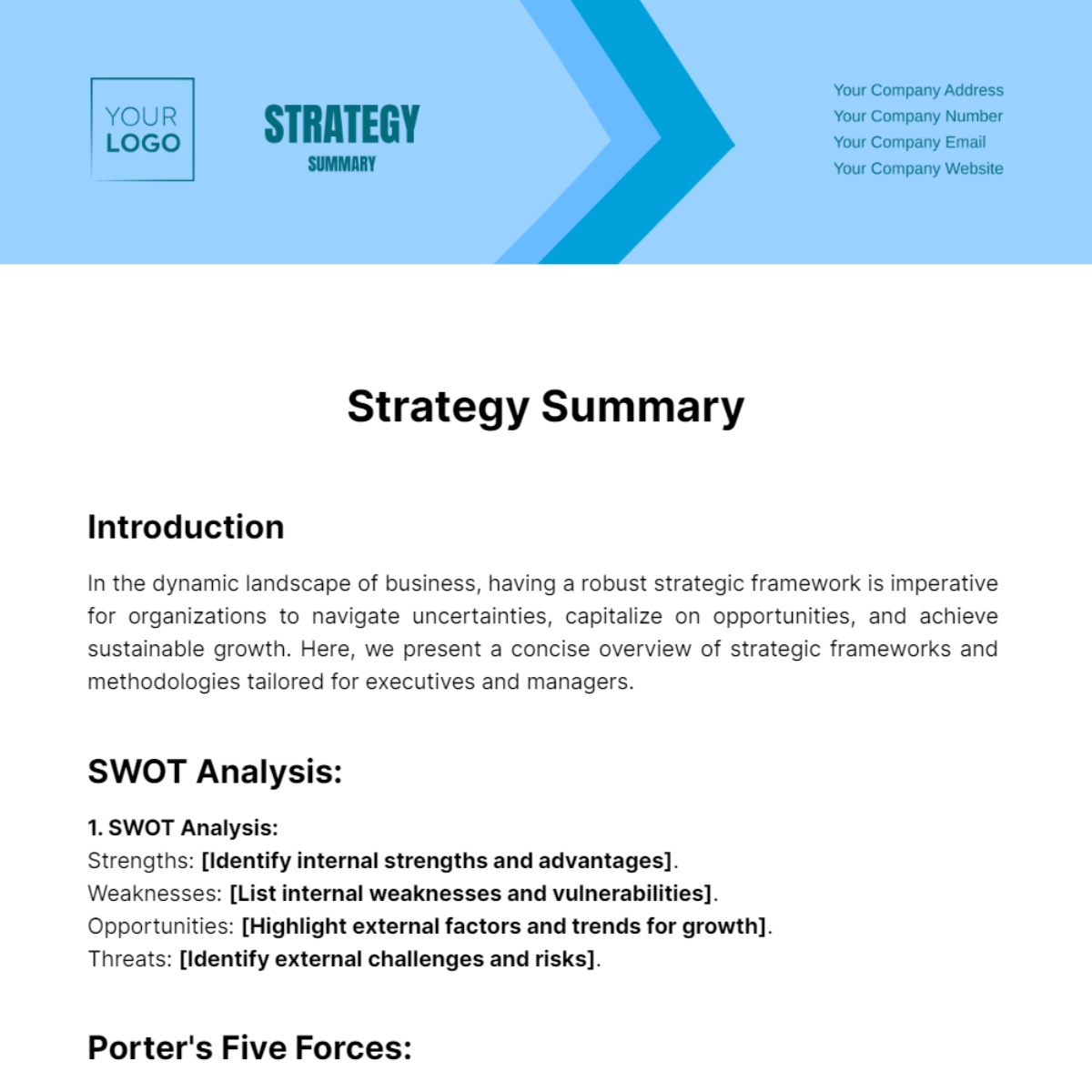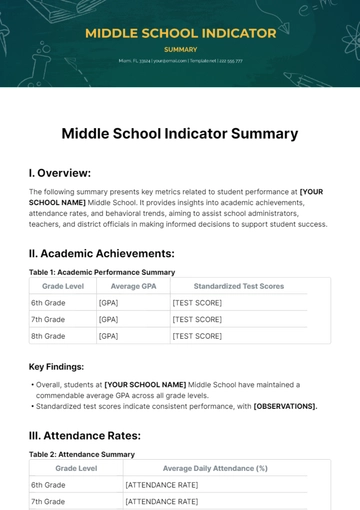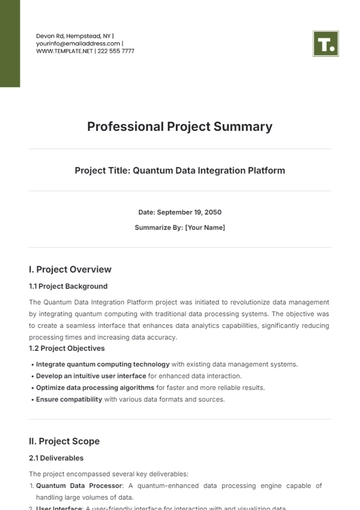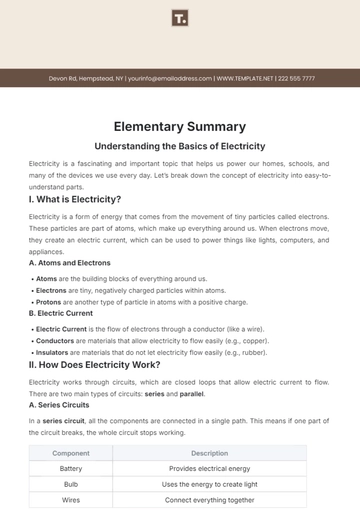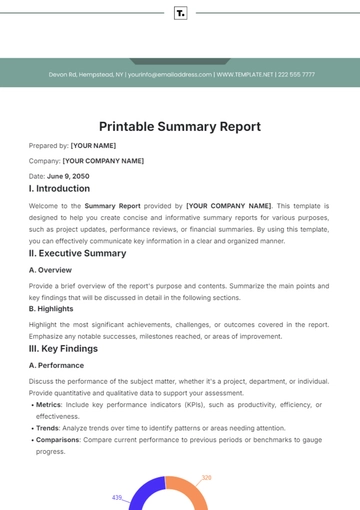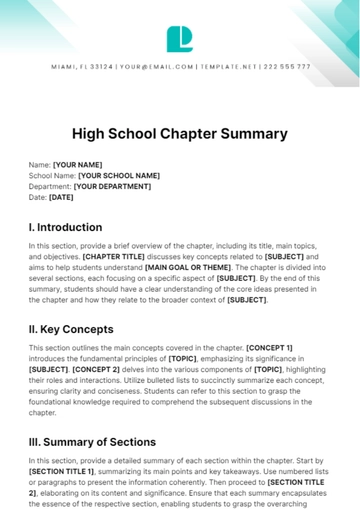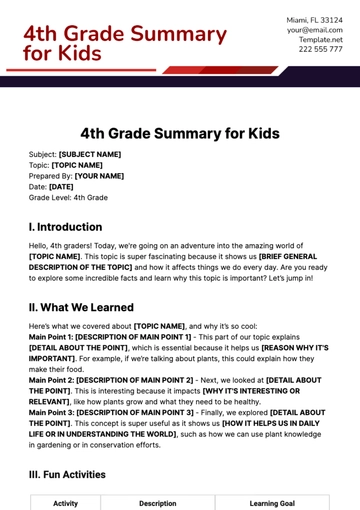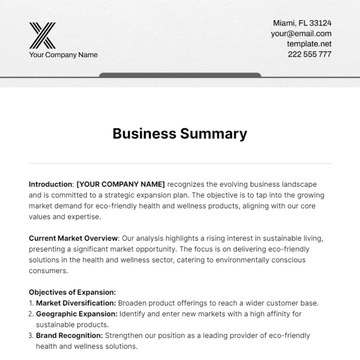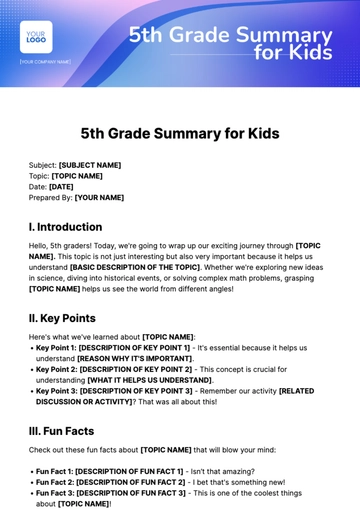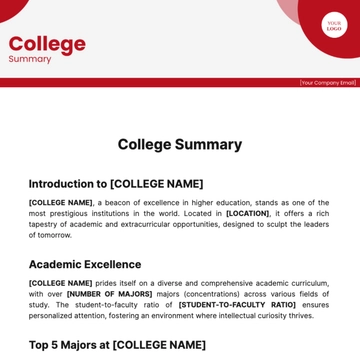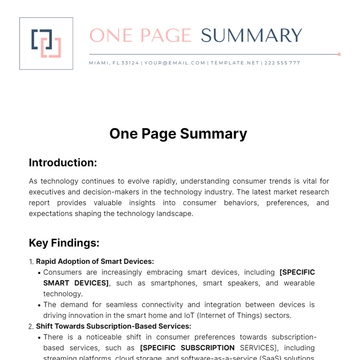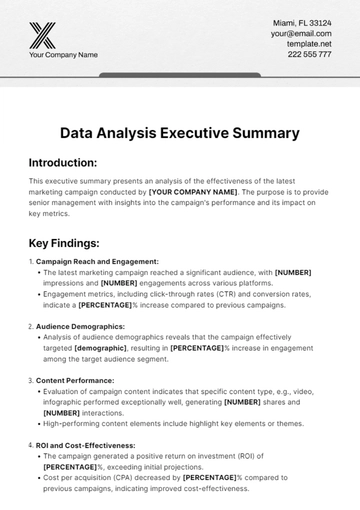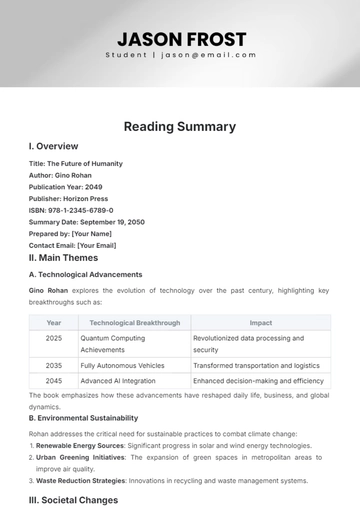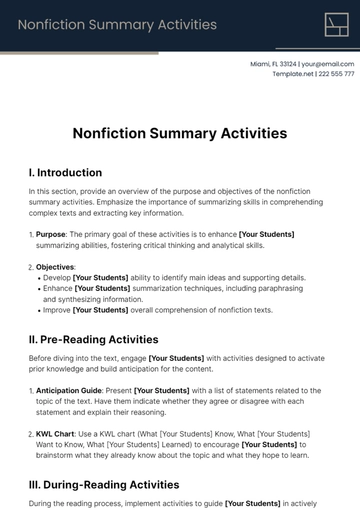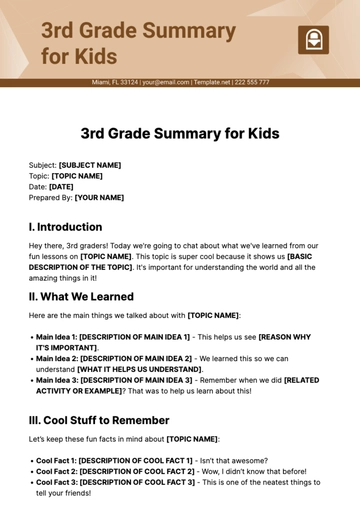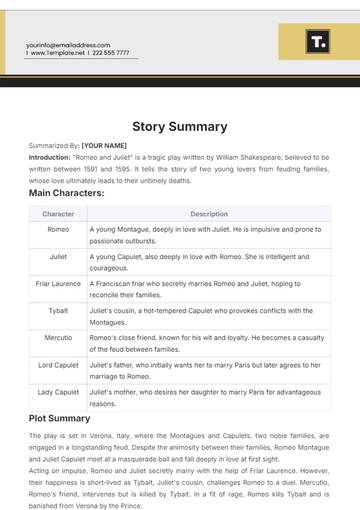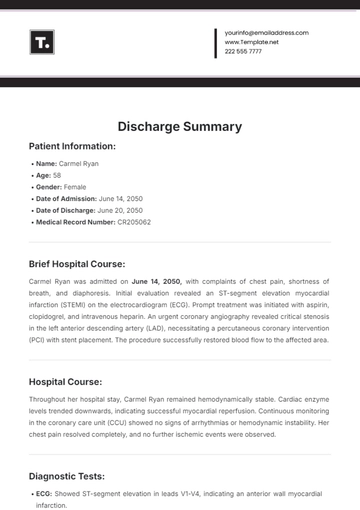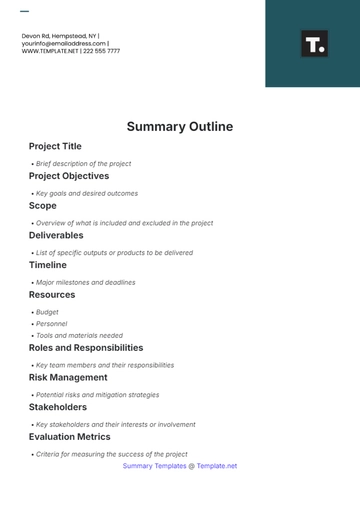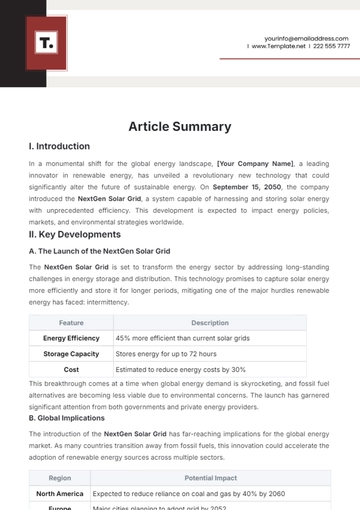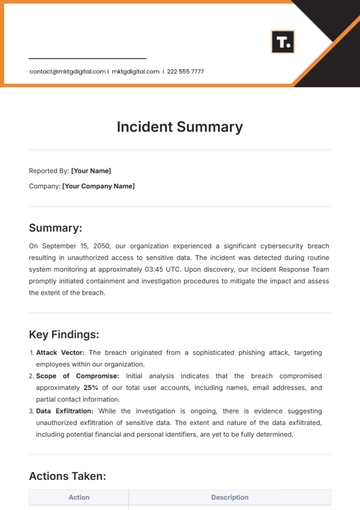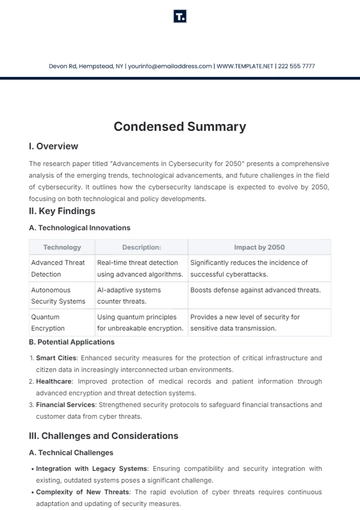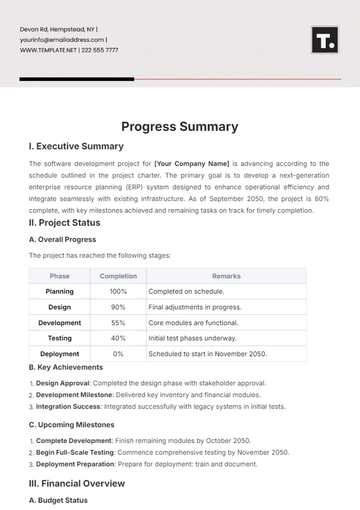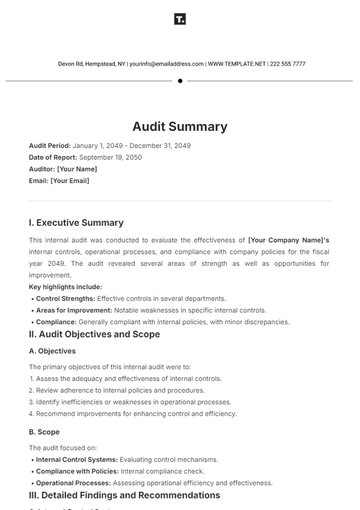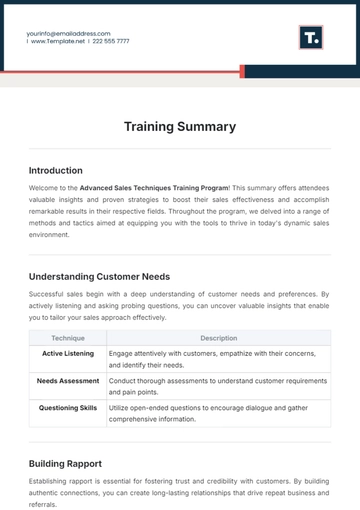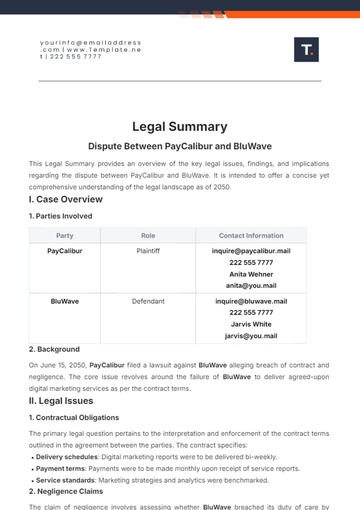Strategy Summary
Introduction
In the dynamic landscape of business, having a robust strategic framework is imperative for organizations to navigate uncertainties, capitalize on opportunities, and achieve sustainable growth. Here, we present a concise overview of strategic frameworks and methodologies tailored for executives and managers.
SWOT Analysis:
1. SWOT Analysis:
Strengths: [Identify internal strengths and advantages].
Weaknesses: [List internal weaknesses and vulnerabilities].
Opportunities: [Highlight external factors and trends for growth].
Threats: [Identify external challenges and risks].
Porter's Five Forces:
Force | Description |
|---|
Supplier Power | Influence exerted by suppliers on the prices and terms of supply. |
Buyer Power | Influence exerted by customers on the prices and terms of purchase. |
Competitive Rivalry | Intensity of competition within the industry. |
Threat of Substitution | Likelihood of customers switching to alternatives. |
Threat of New Entry | Potential for new competitors entering the market. |
PESTLE Analysis:
Political: Government policies, regulations, and stability.
Economic: Economic conditions, trends, and factors impacting business operations.
Social: Societal trends, demographics, cultural factors, and lifestyle changes.
Technological: Technological advancements and innovations affecting the industry.
Legal: Legal frameworks, regulations, and compliance requirements.
Environmental: Environmental factors, sustainability concerns, and climate change implications.
Balanced Scorecard:
Perspective | Key Metrics and Objectives |
|---|
Financial | Revenue growth, profitability, cost reduction, return on investment. |
Customer | Customer satisfaction, retention, acquisition, market share. |
Internal Process | Operational efficiency, quality improvement, innovation, supply chain management. |
Learning & Growth | Employee satisfaction, skills development, organizational culture, innovation. |
Blue Ocean Strategy:
Value Innovation: Creating uncontested market space by simultaneously pursuing differentiation and low cost.
Four Actions Framework: Eliminate, Reduce, Raise, Create - to reconstruct market boundaries and unlock new value.
Scenario Planning:
Identify Uncertainties: Key factors and uncertainties impacting the business environment.
Develop Scenarios: Construct multiple plausible future scenarios based on different combinations of uncertainties.
Strategic Responses: Determine strategic responses and actions for each scenario to enhance resilience and agility.
Conclusion
The appropriate strategic framework and methodology can help an organization shape its future and position itself for success. Utilizing these tools can help achieve a better alignment with corporate objectives, respond more effectively to market dynamics, and drive overall growth.
Authored By:
[YOUR NAME]
Summary Templates @ Template.net
